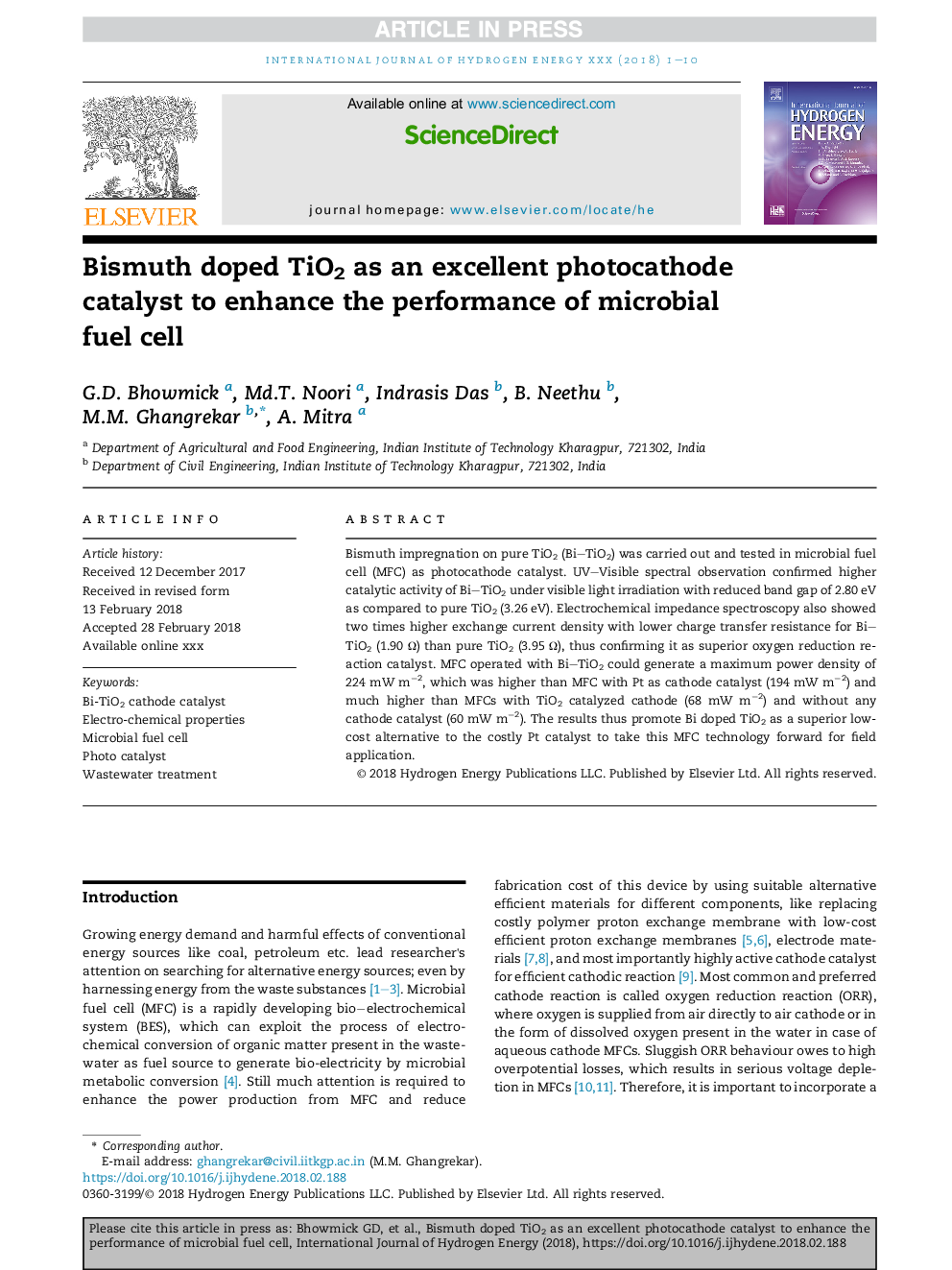| Article ID | Journal | Published Year | Pages | File Type |
|---|---|---|---|---|
| 7706604 | International Journal of Hydrogen Energy | 2018 | 10 Pages |
Abstract
Bismuth impregnation on pure TiO2 (BiTiO2) was carried out and tested in microbial fuel cell (MFC) as photocathode catalyst. UV-Visible spectral observation confirmed higher catalytic activity of BiTiO2 under visible light irradiation with reduced band gap of 2.80 eV as compared to pure TiO2 (3.26 eV). Electrochemical impedance spectroscopy also showed two times higher exchange current density with lower charge transfer resistance for BiTiO2 (1.90 Ω) than pure TiO2 (3.95 Ω), thus confirming it as superior oxygen reduction reaction catalyst. MFC operated with BiTiO2 could generate a maximum power density of 224 mW mâ2, which was higher than MFC with Pt as cathode catalyst (194 mW mâ2) and much higher than MFCs with TiO2 catalyzed cathode (68 mW mâ2) and without any cathode catalyst (60 mW mâ2). The results thus promote Bi doped TiO2 as a superior low-cost alternative to the costly Pt catalyst to take this MFC technology forward for field application.
Related Topics
Physical Sciences and Engineering
Chemistry
Electrochemistry
Authors
G.D. Bhowmick, Md.T. Noori, Indrasis Das, B. Neethu, M.M. Ghangrekar, A. Mitra,
